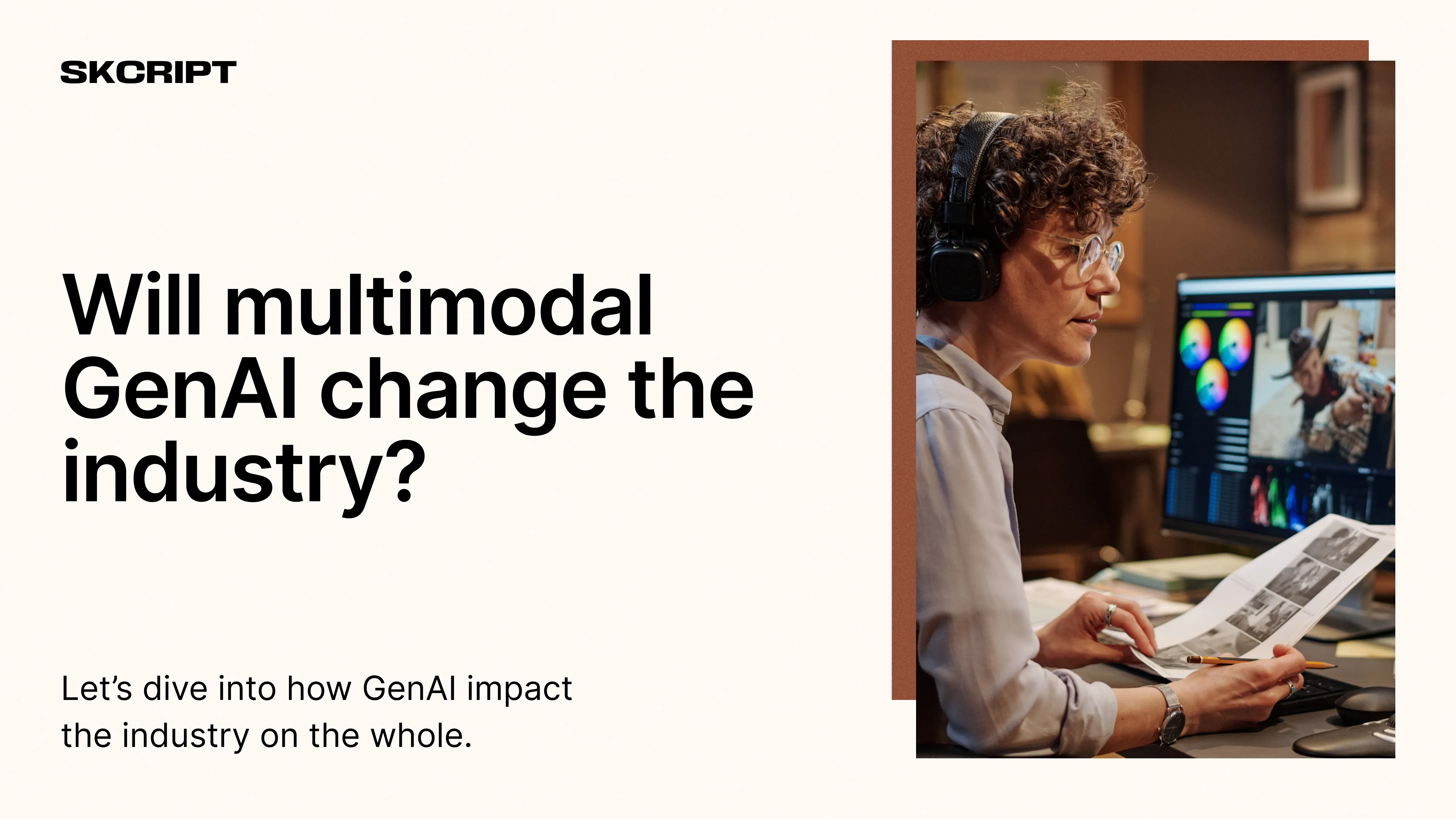How will multimodal GenAI be used to create a new business model? How will multimodal GenAI be used to reinvent a business process?
The launch of Google’s Gemini project is a major step forward in the development of multimodal GenAI solution for the masses. The Gemini project signifies a huge shift towards a more multimodal approach in AI technology.
The introduction of ChatGPT, based on GPT 3.5 was a game-changer for content creation. ChatGPT proved that an AI solution could be scaled to masses, and the adoption is in the use-case and not publishing research papers.
Announcement: Skcript announces GenAI Implementation Services for Enterprises
Now with the emergence of Large Multimodal Models (LMMs) like GPT 4, DALL-E, CLIP, and Gemini, multimodal GenAI is ready to be used for enterprise business applications. Today, we are witnessing potential revolutions across various sectors, including manufacturing, e-commerce, and agriculture.
These advanced LMMs are a perfect fit for processing not just text, but images, code, and uniquely for Gemini, audio and video. This capability allows them to interact with the physical world in a more direct manner.
While the race to improve these LMMs, enhancing their industrial applications, and scaling them to the masses is on, the question remains, how will multimodal GenAI disrupt the business world?
The efficiency gains from GenAI bots, currently in the range of 10-20%, could see substantial expansion into new areas with the use of LMMs. We envision a future where LMMs are the defaults in the industry, and the bots that are capable of seeing and hearing, will be the norm.
It is only a matter of time before multimodal GenAI applications are capable of processing data from various sources like IoT sensors, manufacturing equipment, and other devices. This will enable them to make decisions based on real-time data, and not just historical data.
Applications of GenAI LMMs for Enterprises
Predictive Maintenance and Plant Optimization: LMMs could revolutionize this area by monitoring production lines for subtle changes and deterioration signs, going beyond just identifying known fault points.
Enhancing Understanding Through Visual Data: In recycling plants, LMMs could autonomously analyze and sort waste, identifying and classifying objects, including unexpected items.
Medical Advances: The accuracy of AI models analyzing scans like MRI or CT could be improved by LMMs by incorporating sound data. They could also interact with doctors to assist in personalized treatment plans.
Creating Accessible Shopping Experiences: LMMs can transform data from retailers into real-time, inclusive customer support by offering visual or auditory assistance tailored to individual needs.
As we move forward, companies must prepare to integrate these multimodal models into their operations. This involves a significant overhaul of data strategies and operations, as LMMs can unlock value from previously underutilized data. Companies also face the decision of whether to develop their own models or partner with others, a choice that will influence their training and hiring strategies.
Furthermore, as LMMs evolve, they could become the brains behind autonomous agents capable of sensing and acting upon their environment. This advancement could lead to fully automated workflows in the next few years, revolutionizing how industries operate.
Evaluate how GenAI LMMs can disrupt your business for good and set you apart. Reach out to Skcript’s GenAI experts to know more .
Subscribe to our newsletter
Get the latest updates from our team delivered directly to your inbox.
Related Posts
Using AI to detect Facial Landmarks for improved accuracy
Using AI to detect Facial Landmarks for improved human face recognition accuracy. A complete tutorial on how we used AI to detect facial features of humans.
AI in 2024: What Actually Worked and What’s Coming Next
AI is everywhere, and it’s not just for the big players. Here are some of the most interesting AI projects that worked in 2024.
Skcript's Enterprise AI Manifesto
Our strict guidelines on how we build Enterprise AI products at Skcript.

